South Africa: An Enjoyable and Impactful Country
After crossing the Indian Ocean from Reunion Island to Richard’s Bay in South Africa, regular Noonsite contributors Brent Crack and Mary Bevan headed down the coast towards the Cape of Good Hope. In their latest report for Noonsite they describe their time in South Africa as one of the most enjoyable and impactful parts of their circumnavigation journey.
Published 12 months ago, updated 9 months ago
We arrived in Richard’s Bay, South Africa after a long trip from Reunion Island. We were warmly greeted by a volunteer from the Ocean Sailing Association of South Africa (OSASA), who then facilitated the check in process with Customs and Immigration.
OSASA Works Hard to Streamline Bureaucracy
OSASA has worked hard to streamline the government bureaucracy for visiting sailors. While there is still a way to go, improvements are being made. We were grateful to have someone in contact with Customs and Immigration who was able to provide us with updates on their arrival. It takes time to change government processes and the steady pressure applied by the OSASA is making the necessary changes take hold.
Prior to arrival in South Africa, all sailors must (by legislation) register online with OSASA and the OSASA folks assist to facilitate any interactions with Customs and Immigration. While this was a different process than anywhere else we have been, it certainly seems to work. Volunteers with OSASA are at every port and they are quick to offer guidance and applicable local knowledge.
Lastly, OSASA also facilitates a local WhatsApp group for international sailors which includes local tradesmen, businesses, marinas and OSASA reps. In our last count, there were more than 300 people on the group with cruisers asking questions and locals giving fulsome responses.
Using Richard’s Bay Marina as a Base
We used the marina at Richard’s Bay as a base to explore the area. Having been provided recommendations by those who came before us, we chose not to delay our South African excursions. Rather than wait to visit more popular and well known game parks, we opted to visit the Hluhluwe-iMfolozi Game Reserve and booked our excursions with Heritage Tours and Safaris out of a town called Saint Lucia.
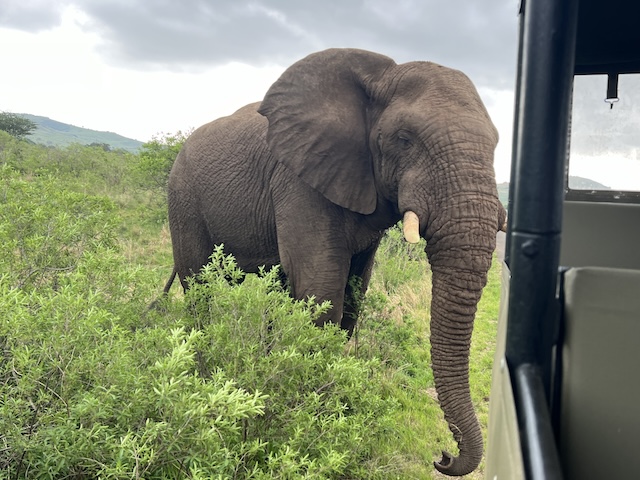

We booked our transportation there through the company with a local who often drives individuals from the Durban airport to Saint Lucia where she also lives. The round trip drive was pricier than renting a vehicle of our own, but having just arrived to South Africa we were happy to have one less thing to worry about.
In retrospect while writing this at the end of our time in South Africa, our choice to do our tours where we did with the company we did and when we did it was the best possible setup. We could not be happier with our experience. From the company management and tour guides to our accommodation and provided meals (snacks, breakfasts, lunches), we were blown away by the level of service and quality of our excursions. We chose a three-day, two-night tour package. Our visit to the park occurred in mid-October and we were fortunate to be able to book two out of four of our tours were private for a slightly higher cost and due to the season we had fewer tourists in the park and the start of the spring animal arrivals across different species.
During our stay in Richard’s Bay yacht club, we were referred to a local man who drives the visitors to town and back. Aside from a rental car, we found he was the best means of transport as walking outside of the immediate area is not an option.
As Richard’s Bay is the first port of entry for most international sailors, new arrivals are steady with others leaving to make room. While we did not need to utilize any of the maintenance companies located on site, many others did and reported generally favourable results.
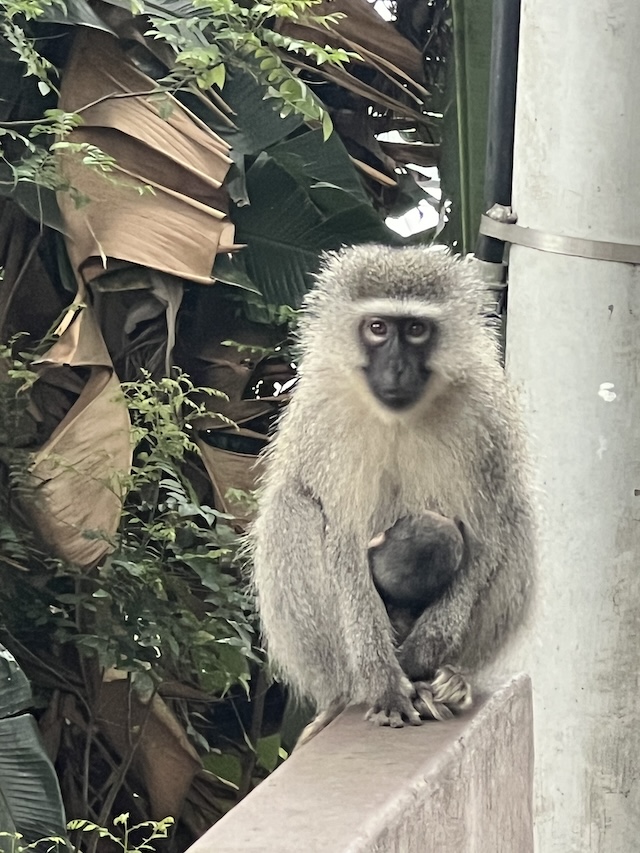

Local Weather Knowledge
As we wanted to be ahead of the crowd of incoming sailors needing spots for their boats, we chose to take a window and stop in Durban. On our arrival, we were once again greeted by the local OSASA volunteer who set us up with free memberships at the two local yacht clubs and gave us guidance to local attractions, provisioning options and other valuable pieces of advice for navigating the city. While speaking with this volunteer, we were enlightened on the necessary technicalities in planning our next steps.
Previously called the “Cape of Storms” before being renamed to the “Cape of Good Hope” local knowledge is vital for safe passage around South Africa. We were warned about the dangers of southerly winds and cut-off lows by locals and international sailors alike.
While southerly winds create stacking, steep waves against a strong current, the cut-off lows are far less predictable and require experience to know what to look for and when to abandon a plan and turn around to return to the previous port. One cruiser we met while in Durban described his clash with a cut-off low as the scariest sailing moments of his life with huge seas building nearly instantaneously.
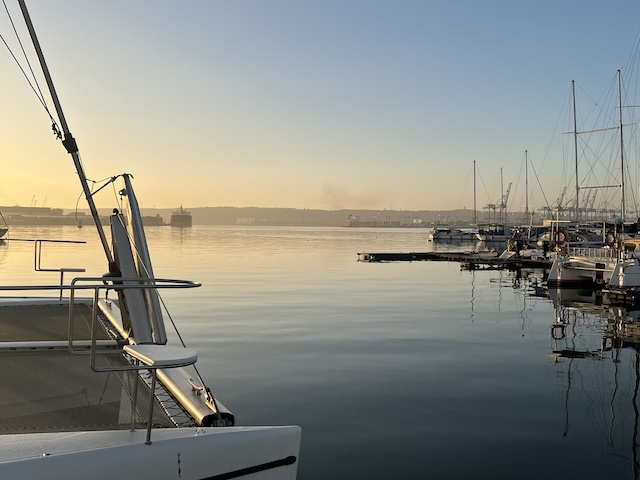

What might look like nothing on a wind forecast or a momentary blip on the map can actually be a sign of boat-breaking conditions. In short, a cut-off low begins in normal sailing weather and often comes as an unforecasted surprise where the wind will suddenly disappear and all will be calm before the wind hits you at high speeds from the opposite direction. We recommend consulting with locals and heeding their warnings before finalizing your sailing plans.
Sailing “The Wild Coast”
The section of coastline between Durban and Port Elizabeth has its own name, known as the “Wild Coast,” due to lack of lights, limited ports to hide from bad weather and a rapid current pushing boats south west. With currents up to five knots, boats have often been pushed further from shore into southerly winds or past their intended port of arrival. If one isn’t within 5 nm of the coast on approach to East London then the current will not allow you to change course in time to stop.
In East London, we were once again greeted by the local OSASA representative who facilitated a mooring for us and arranged a welcome get together for locals and the handful of cruisers that had arrived. Fore and aft moorings were available for most boats with a few spots for smaller boats along the dock to the yacht club.
A local father and son duo were able to help us get tied up, as these mooring ties used jugs for floats and needed to be untied first. We were glad for their help as the setup was unfamiliar and unclear to us in this particular spot. During this process we recommend having a bucket of water at the ready with a scrub brush as the river coats the lines and the lines coat everything they touch. While in Durban, we had been told that there was a wall we could tie to if we arrived in the dark, which we did. This wall is on the other side of the river across from the yacht club and has wooden pallets you can weave lines through to secure your boat to. We found that when it was time to leave, having to do so in the dark due the highly technical aspect of sailing the South African coast and short windows that were not ‘normal’ for this time of year, it was easiest for us to retie the yacht club’s lines during the day then tie to the wall for a simple departure at night.
The East London Yacht Club has a washing machine and clothes lines for drying. The washing machine does not require tokens but the honour system is used and the small charge is added to your bill before departure. We did not leave the yacht club for provisioning as we had done so in Durban. The Yacht Club has a braai area and a pizza oven which can be turned on by request and is best done with a group pizza night between sailors. Good times were had by all, and the warm hospitality of the sailing community of South Africa certainly shone brightly.
Waiting for the Weather
From East London, we continued onto Port Elizabeth for a quick stop to wait for weather. Once again, the OSASA representative was quick to help, facilitated our arrival and give solid advice. Port Elizabeth is not set up for cruisers and can only take a small number of boats. Our 40ft/12m catamaran was only just able to fit and towered over nearby boats.
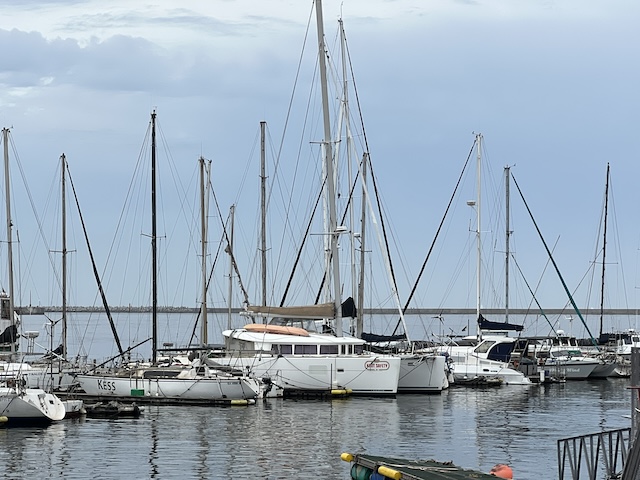

Another short stay meant we did not give this area the attention it deserved, however, we were amazed by a restaurant just next door that had top quality food and service for great prices. Had we stayed longer, we would have wanted to spend every night there. The restaurant, called Off The Hook, was fully booked when we arrived shortly after opening, but they do have additional seating on the ground level for any walk-ins once full.
With our next destination being Gordon’s Bay, we set off to round Cape Agulhas. Much less famous than the Cape of Good Hope, Cape Agulhas is the southern tip of Africa and the dividing point between the Indian and Atlantic Oceans. Rounding the Cape was a benign experience for us, with a gentle tailwind and nice current pushing us along.
False Bay and the Gordon’s Bay Yacht Club
We arrived at Gordon’s Bay Yacht Club, in the north east corner of False Bay. It’s out of the way and rarely gets international visitors, which suited us just fine. We have found in our travels that by going where others don’t, we befriend locals who are excited to welcome and engage with us.
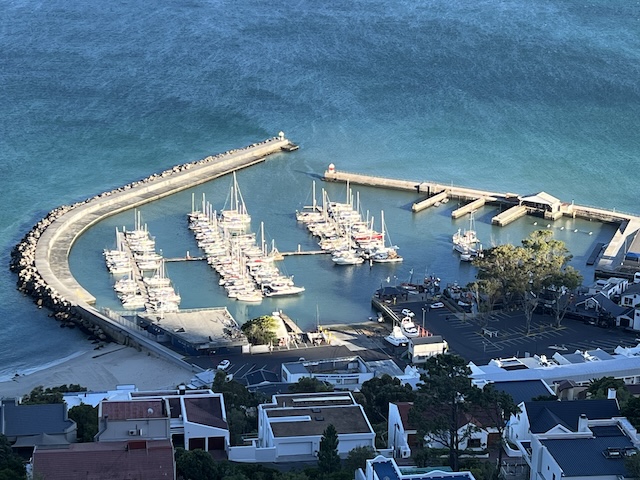

Our new friends were eager to hear our stories, see the boat, and show off what the surrounding area near Cape Town had to offer — it is truly something. We were taken out for a day of driving through wineries (referred to as wine farms), invited to a home for a braai, delivered wine from their personal vines, and overall embraced as a part of the community. We cannot say enough good things about Gordon’s Bay Yacht Club and we highly recommend it to any international visitors. Being a smaller marina, we urge those who are interested in staying there to reach out ahead of time as they do have some vessel draft and length restrictions to work with.
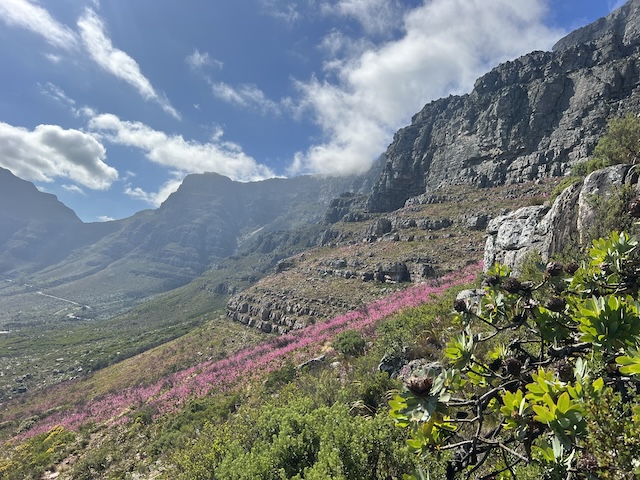

Our choice of Gordon’s Bay was a stroke of luck that began as the opposite. Like all other sailors, we intended on being in the heart of Cape Town at the V&A Marina.
Unfortunately, our arrival in South Africa was timed just ahead of two large rallies — the World ARC and the Oyster World Rally. These two groups had nearly every spot in Cape Town marinas fully booked. One boat we knew who had a spot in V&A had booked it nearly a full year in advance and still were given limitations on the length of their stay.
We had been told there were no spaces for us when we reached out, months in advance. As our arrival came closer and these marinas kept their spaces empty and reserved, we were told there would be space for us and the pricing they provided was beyond our comfort levels. Boats we knew who did stay found that between the marina costs and the prices of nearby restaurants, they couldn’t afford to really explore. Our stay in Gordon’s Bay was a fraction of the cost in a neighbourhood mostly used for vacation rentals with lovely quiet beaches and everything we needed in walking distance.
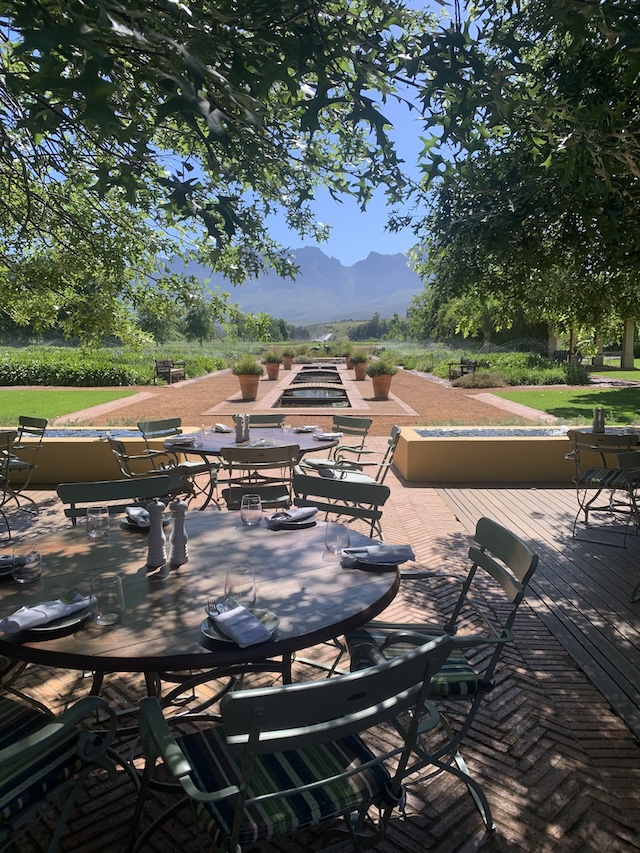

We found that we were in a better jump-off point for other activities which involved a vehicle, such as visiting the penguin colony by Betty’s Bay and the numerous wine farms and estates nearby. We kept busy and entertained during our month long stay — the longest we have ever stayed in any marina at a time or near any town.
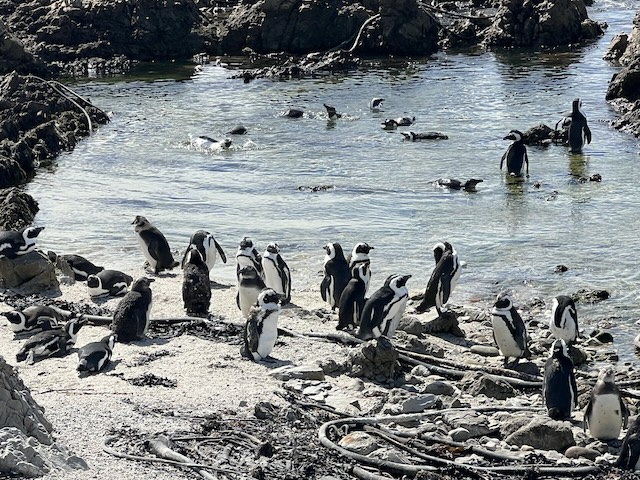

An Epic Night
Our departure from Gordon’s Bay was nothing short of epic. It truly was a “seeing is believing” moment. We shared what words we could put together in the sailing WhatsApp groups for South Africa and the Gordon’s Bay Yacht Club.
Last night was one of those epic nights that only come along ever so rarely. We departed Gordon’s Bay Yacht Club and were immediately into brilliant blue bioluminescence. The water churning along the hulls lit up the surrounding area like a spotlight was on us.
About 10 miles from the Cape of Good Hope, we were joined by a large pod of dolphins, streaming through the phosphorescence as they swam and jumped. They left trails in the glow as they went and were visible a long distance from the boat, 500 meters or more, just by the glow as they swam.
And then we went through many huge schools of small fish. The whole sea was glowing, and the dolphins were hunting. The fish were jumping all around us, boiling as they were being chased and eaten. The smell of fish in the air was abundant, just from the shear numbers jumping at one time. Every now and again, larger fish would join the dolphins and dart past, completely visible in the bioluminescence.
Words do not adequately describe it. Pictures would not capture it. Memories are all that exist.
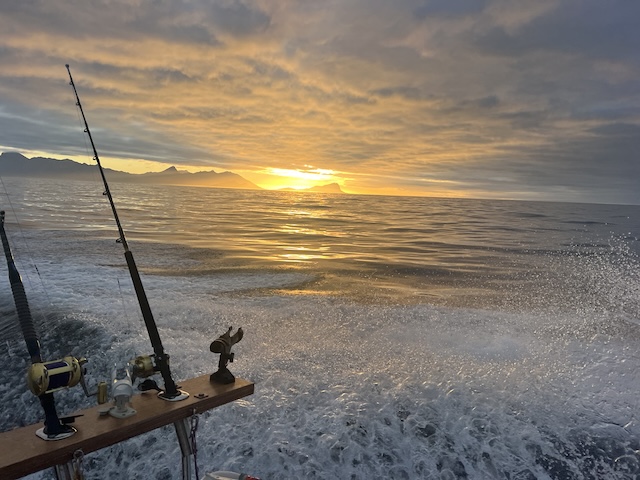

Checking Out of South Africa
On the west coast of South Africa, there are two locations one can check out of the country, Saldanha and Cape Town. We had intended to check out at Saldanha, but a last minute controversy over an unexpected fee for check out left us hesitant.
Saldanha is a new port of entry/exit from the country, and it appears that work is still being done to refine the process to exit. We would suggest that any sailors looking to depart thoroughly research to determine the process required there. In the end, we chose to check out at Cape Town as we did not want to be the Guinea pigs with a new process.
We were required to go to the immigration dock at the Royal Cape Yacht Club in Cape Town and once again, the local OSASA representative went out of their way to ensure our check out went smoothly.
If you are sensing a trend about OSASA, it’s because they are doing good work for visiting sailors, having knowledgeable and personable hosts in each port helps make things flow smoothly. The work being done with government will pay dividends in the future and continue to make things easier for sailors. Don’t fight the process, as some steps may feel unnecessary, but accept and enjoy the helpful people who will likely become friends.
After a memorable and impactful stay in South Africa, we departed Cape Town for Walvis Bay, Namibia. The approximately 700 nm run, straight down wind, meant we kept our parasail up for nearly the duration of the trip. The Parasail is our favourite sail to utilize. It gets us our best speeds and is the most comfortable in nearly any sea state with this trip as no exception.
What was exceptional was the tuna fishing. After only two days, we had to stop fishing as the freezers and fridges were full. Marine life was also pretty spectacular with lots of seals, dolphins, whales and the odd sunfish thrown in the mix.
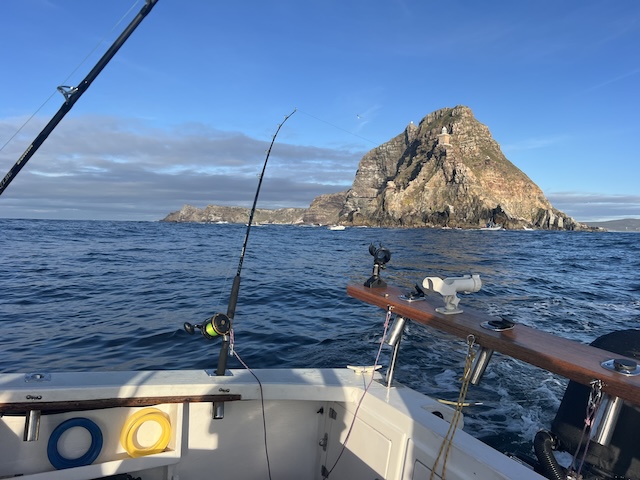

Our plan is to spend Christmas and New Years in Walvis Bay — where the desert meets the sea and the “skeleton coast” begins. Next up, our experience with Namibia before we embark across the Atlantic.
Brent Crack and Mary Bevan
SV Knot Safety
……………………………
About the Authors:
Brent Crack and Mary Bevan are two Canadian citizens who are sailing around the world on their Lagoon 400 catamaran SV Knot Safety. After leaving Panama in December 2022, they are following a path to “go where others don’t” in their circumnavigation and have crossed the Pacific via Easter Island, French Polynesia and the Cook Islands to New Zealand. After crossing the Tasman Sea to Sydney, Australia, they took the southern route of Australia to Fremantle and Geraldton in Western Australia which was their departure point for their Indian Ocean Crossing. They arrived in South Africa after a long ocean crossing and discovered a memorable and impactful country.
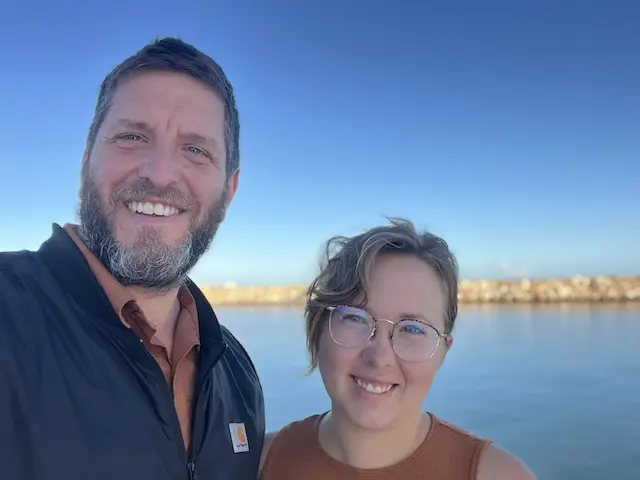
………………………………
The opinions expressed in this article are the author’s own and do not reflect the view of Noonsite.com or World Cruising Club.
………………………………
Other reports from Brent and Mary’s Circumnavigation Odyssey:
- Indian Ocean Crossing Part 2: Rodrigues – Reunion – Richard’s Bay
- Indian Ocean Crossing Part 1: Australia to Rodrigues
- Australia: Dodging Lobster Pots and Aquaculture Pens across the Great Australian Bight
- Australia: Heading South From Sydney Going West
- Australia, Sydney: New Year’s Eve Magic and Chaos.
- Cook Islands, Rarotonga: We’d Return in a Heartbeat – Just Not With a Boat!
- French Polynesia: Making Sense of Anchoring Restrictions
- French Polynesia, Society Islands: The Beauty and Disappointment
- French Polynesia, Tuamotus: Coral Bombies, Snorkelling and Sharks
- French Polynesia – A Warm Welcome to the Gambiers
- Pitcairn Island – Well Worth the Journey
- Rapa Nui (Easter Island) – Nothing Short of Amazing
………………………………
© 2024 Noonsite. This content was edited by Noonsite. Do not reproduce without permission. All rights reserved.
The opinions expressed in this article are the author’s own and do not reflect the view of Noonsite.com or World Cruising Club.
Find out all news, reports, links and comments posted on Noonsite, plus cruising information from around the world, by subscribing to our FREE monthly newsletter. Go to https://www.noonsite.com/newsletter/.
Related to following destinations: Cape Town (Table Bay), Durban, East London, Port Elizabeth, Richards Bay, Saldanha Bay, Simon's Town, South Africa
Related to the following Cruising Resources: Africa, Circumnavigation, Cruising Information, Indian Ocean, Routing, World Regions Information



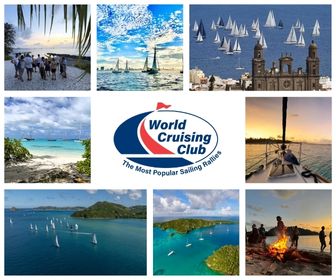
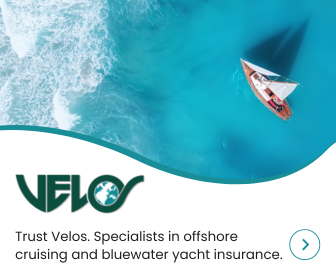

Thank you for the information in your post. Would love to hear about how check in process for Nanibia. L